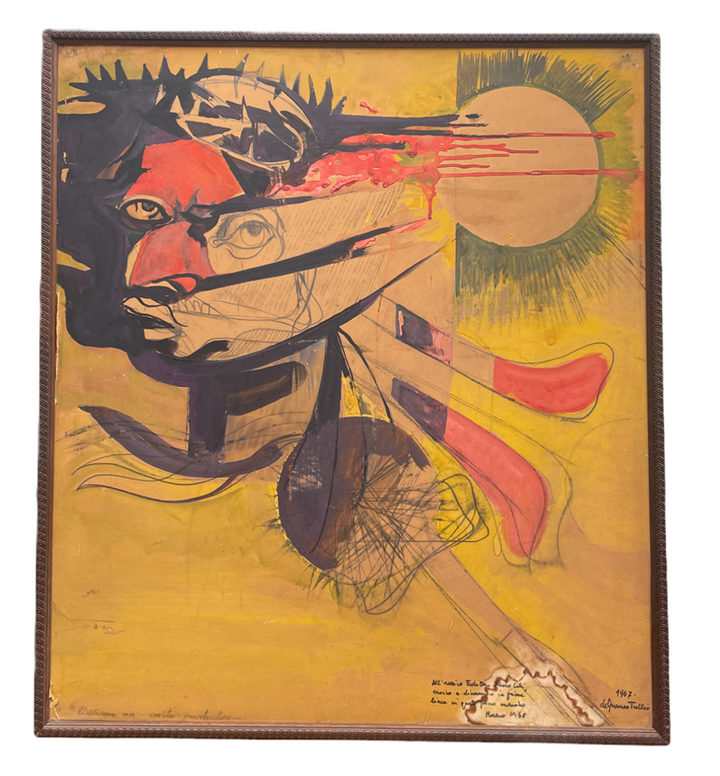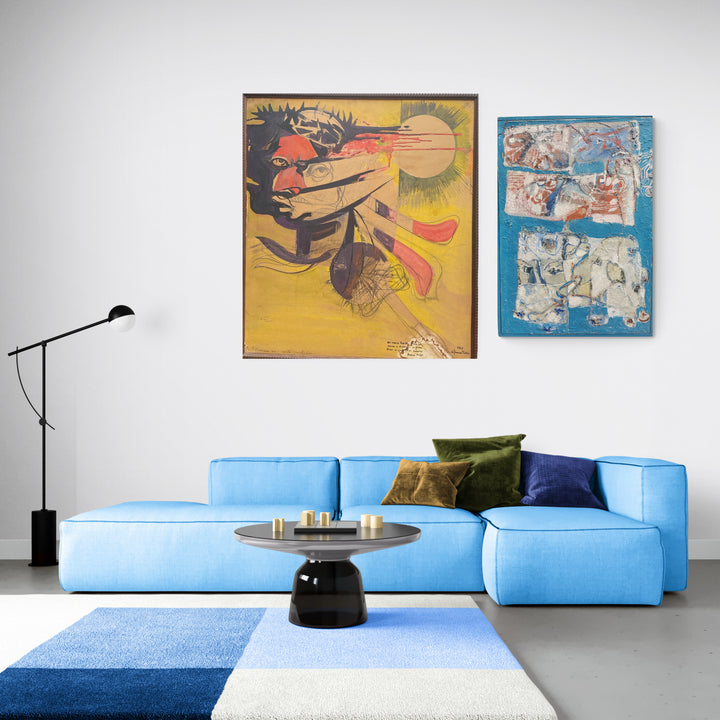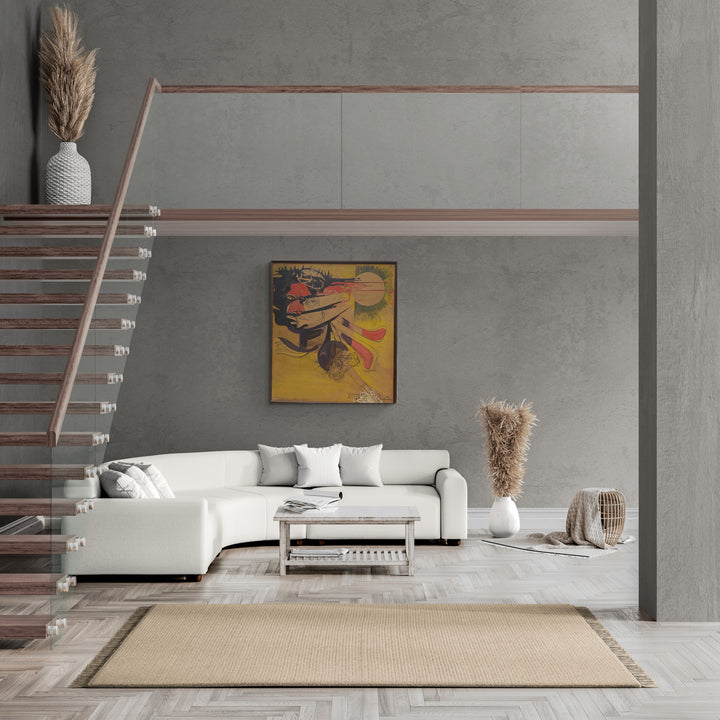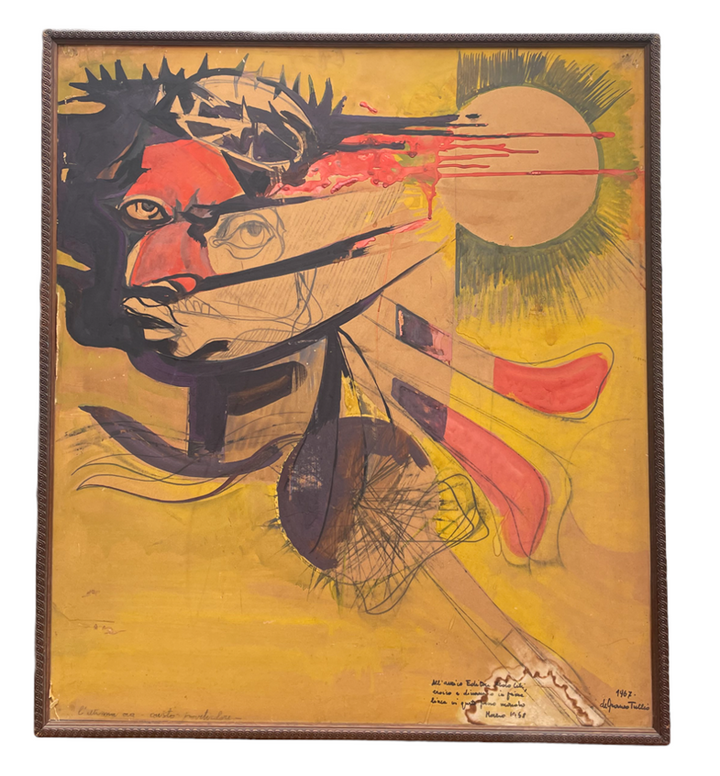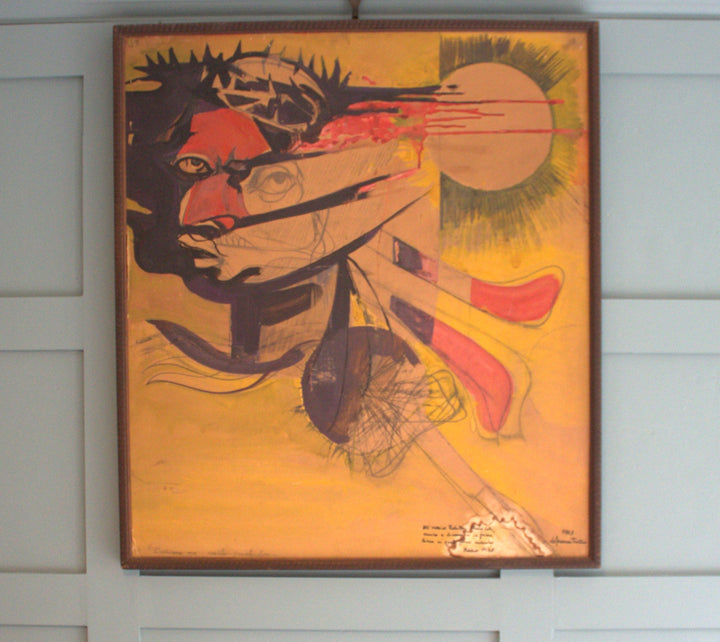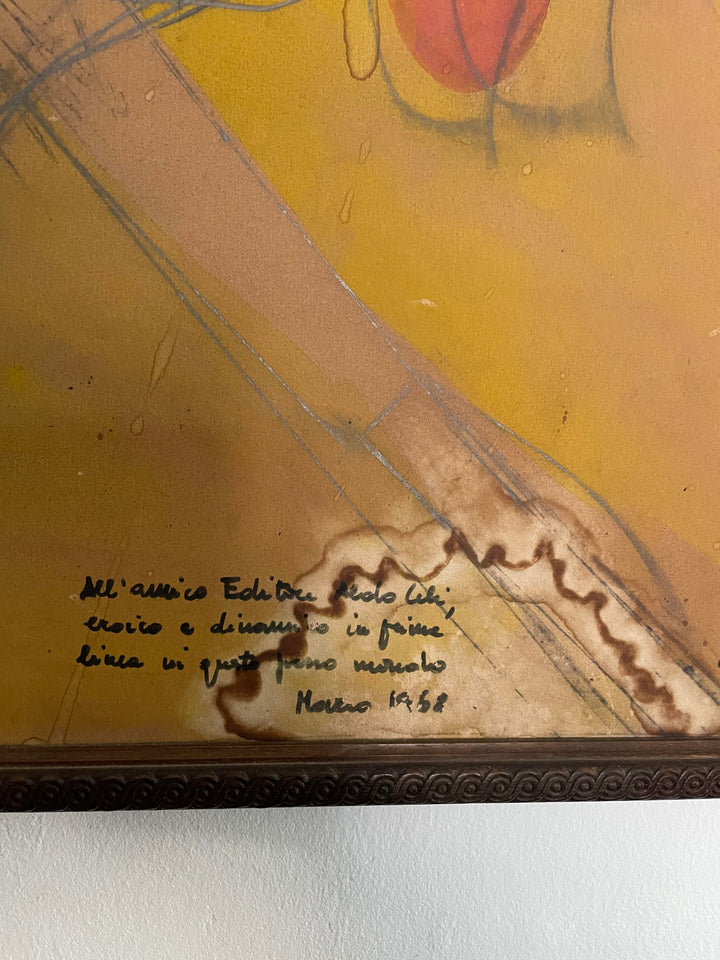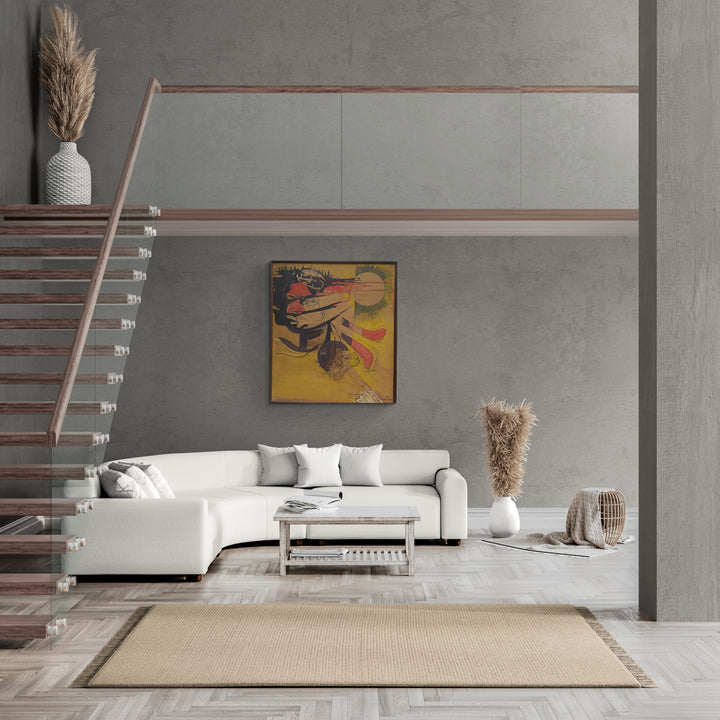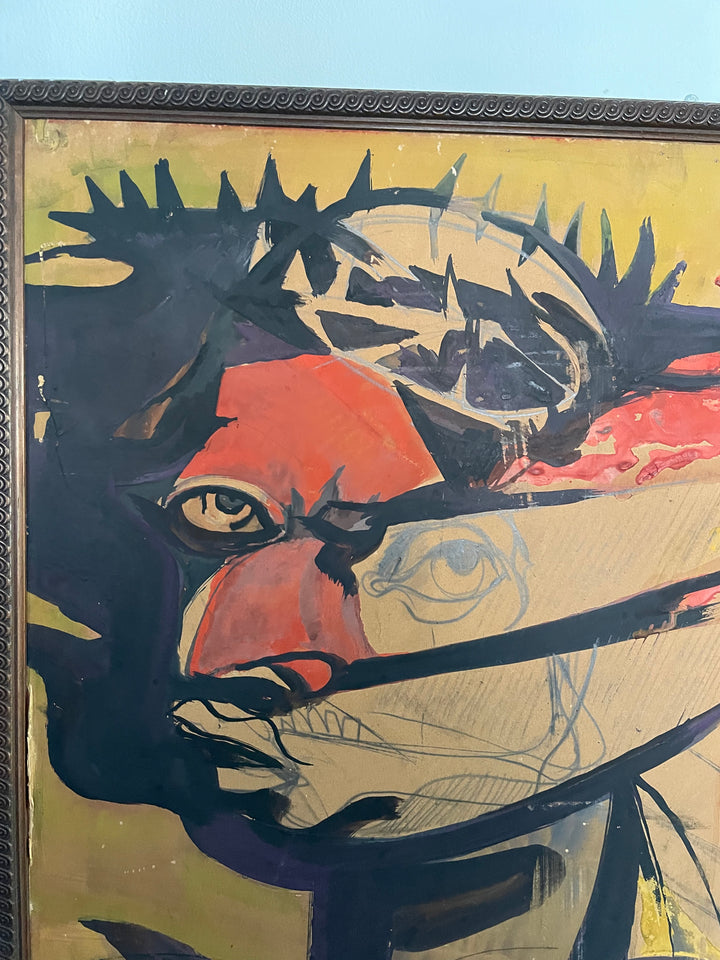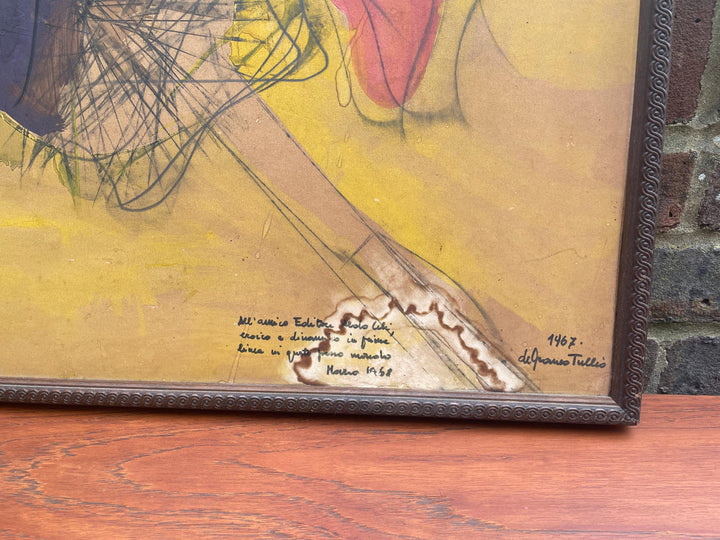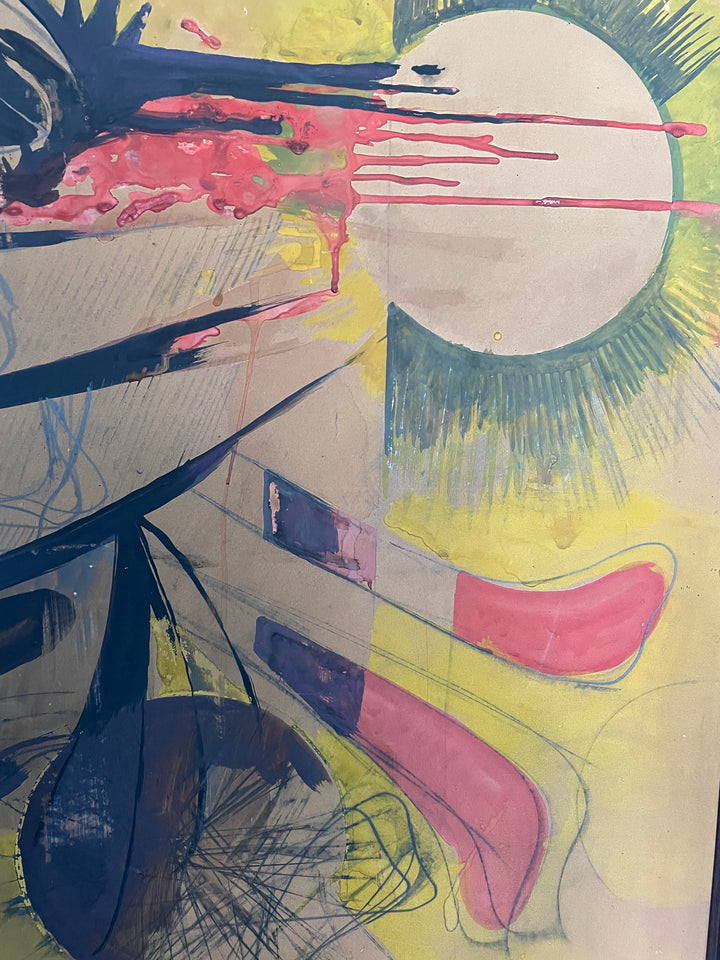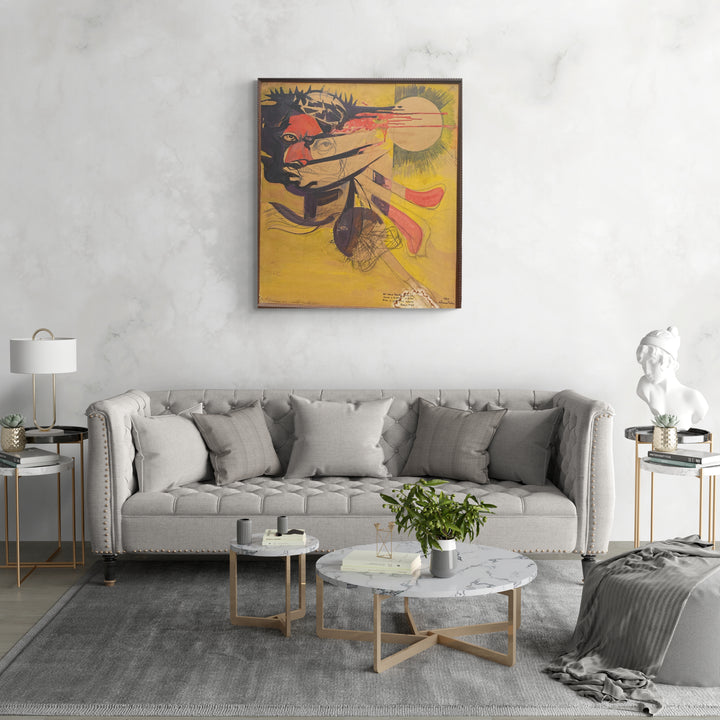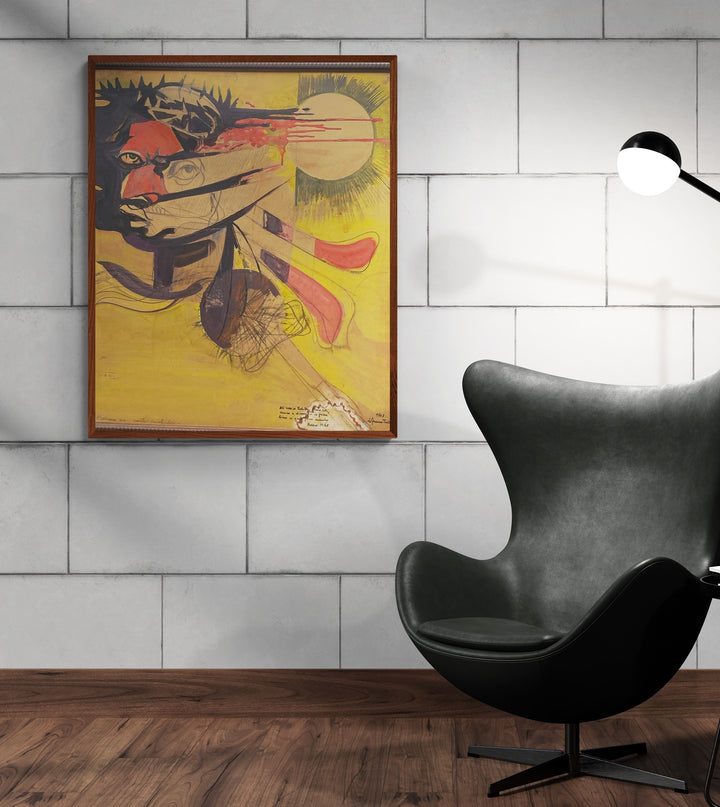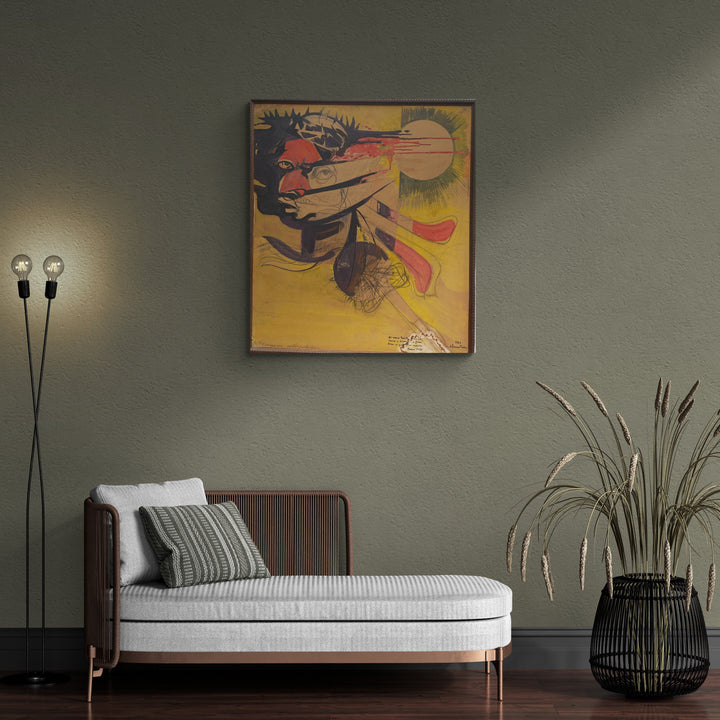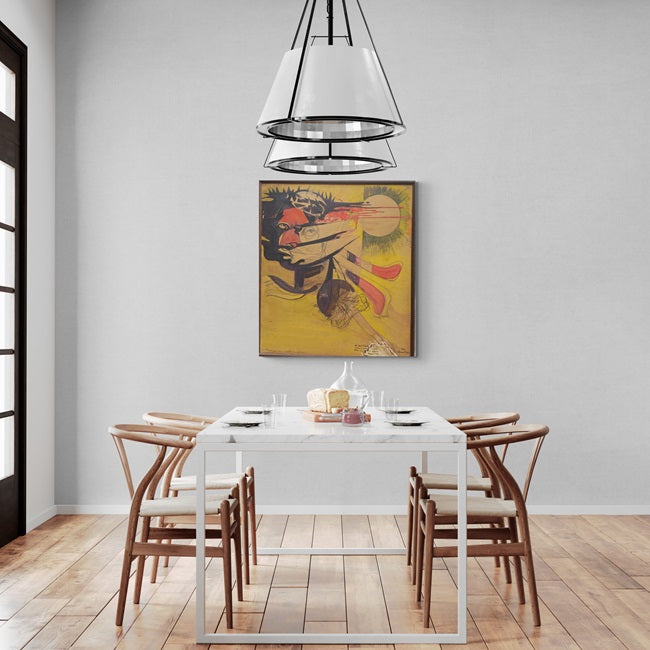Mid Century 1960s Italian Abstract painting
- Regular price
- £1,150.00
- Sale price
- £1,150.00
- Regular price
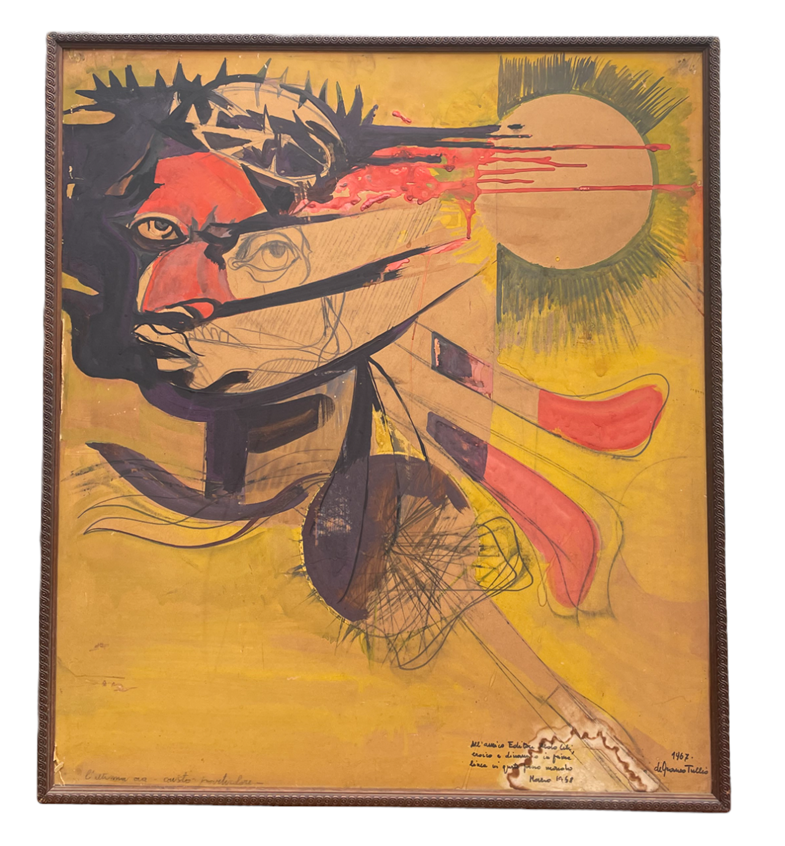
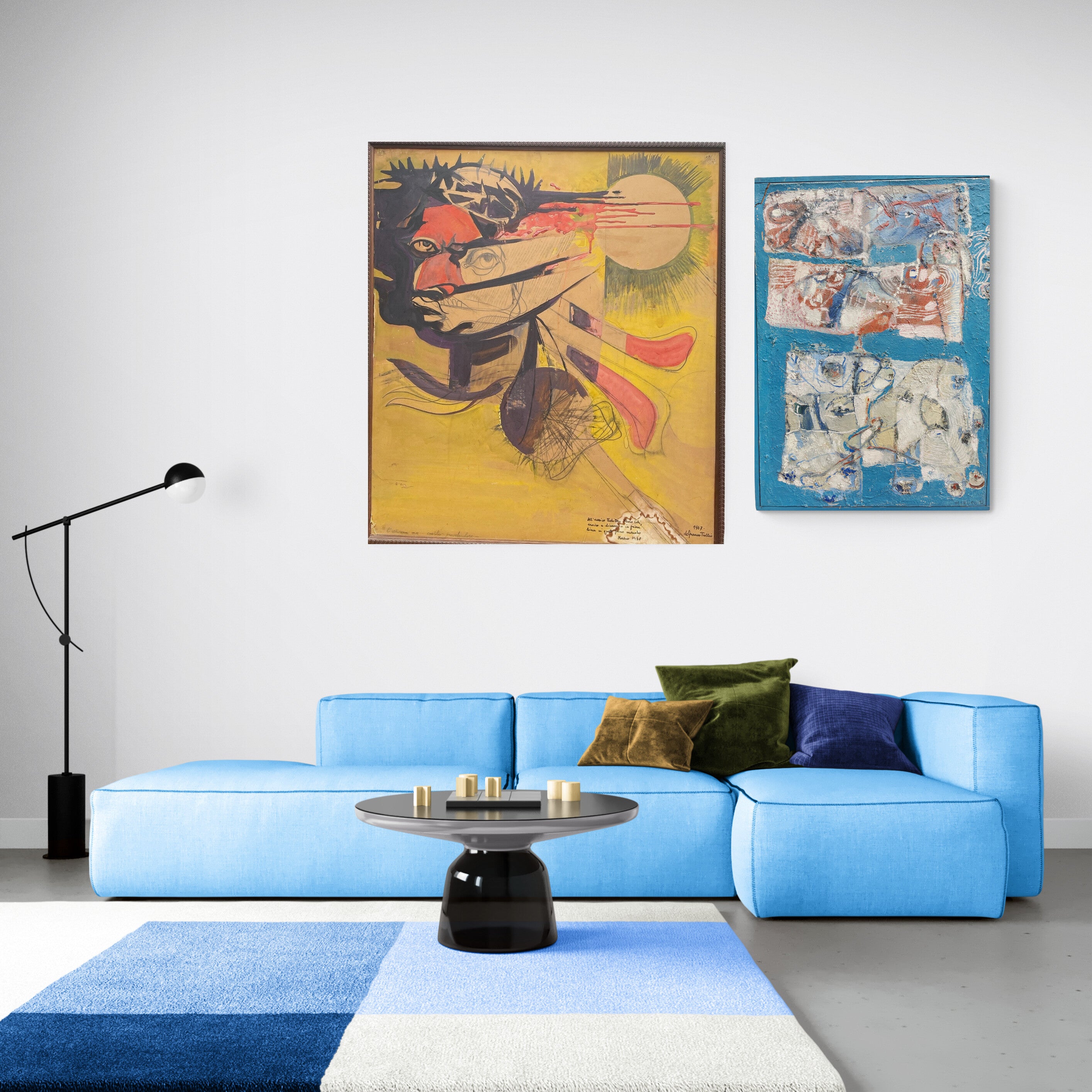
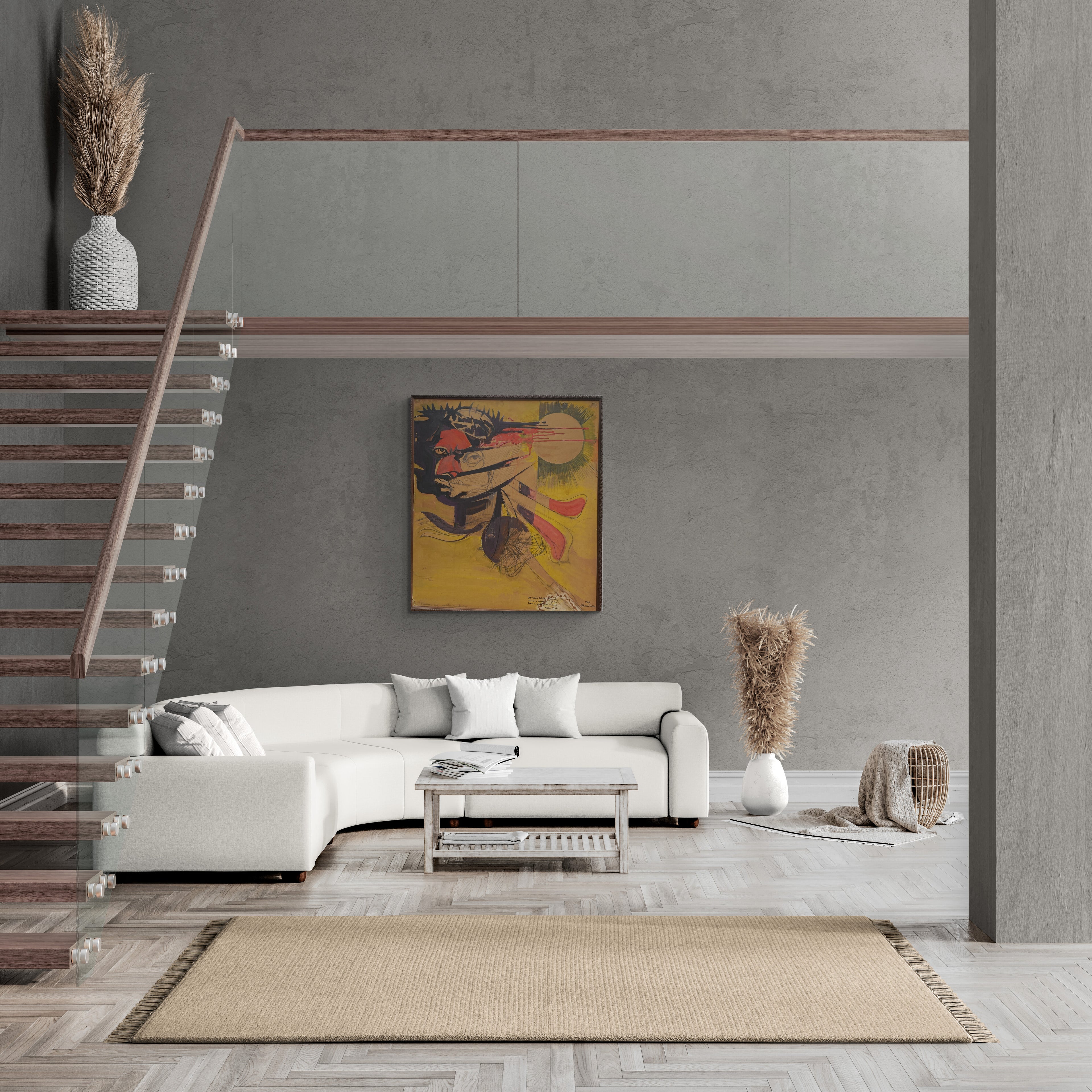
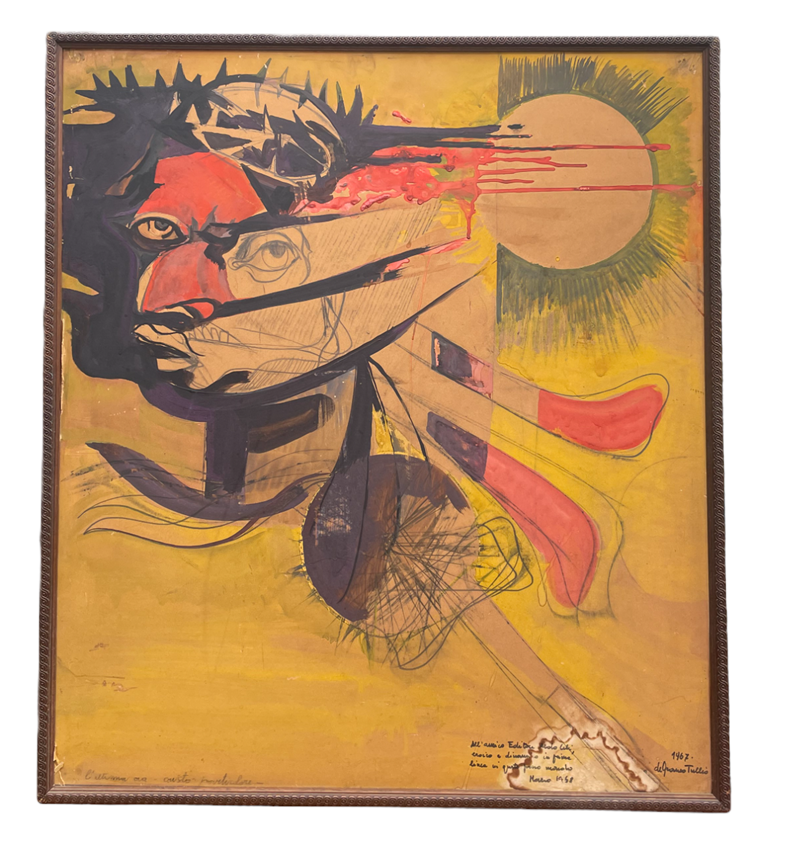
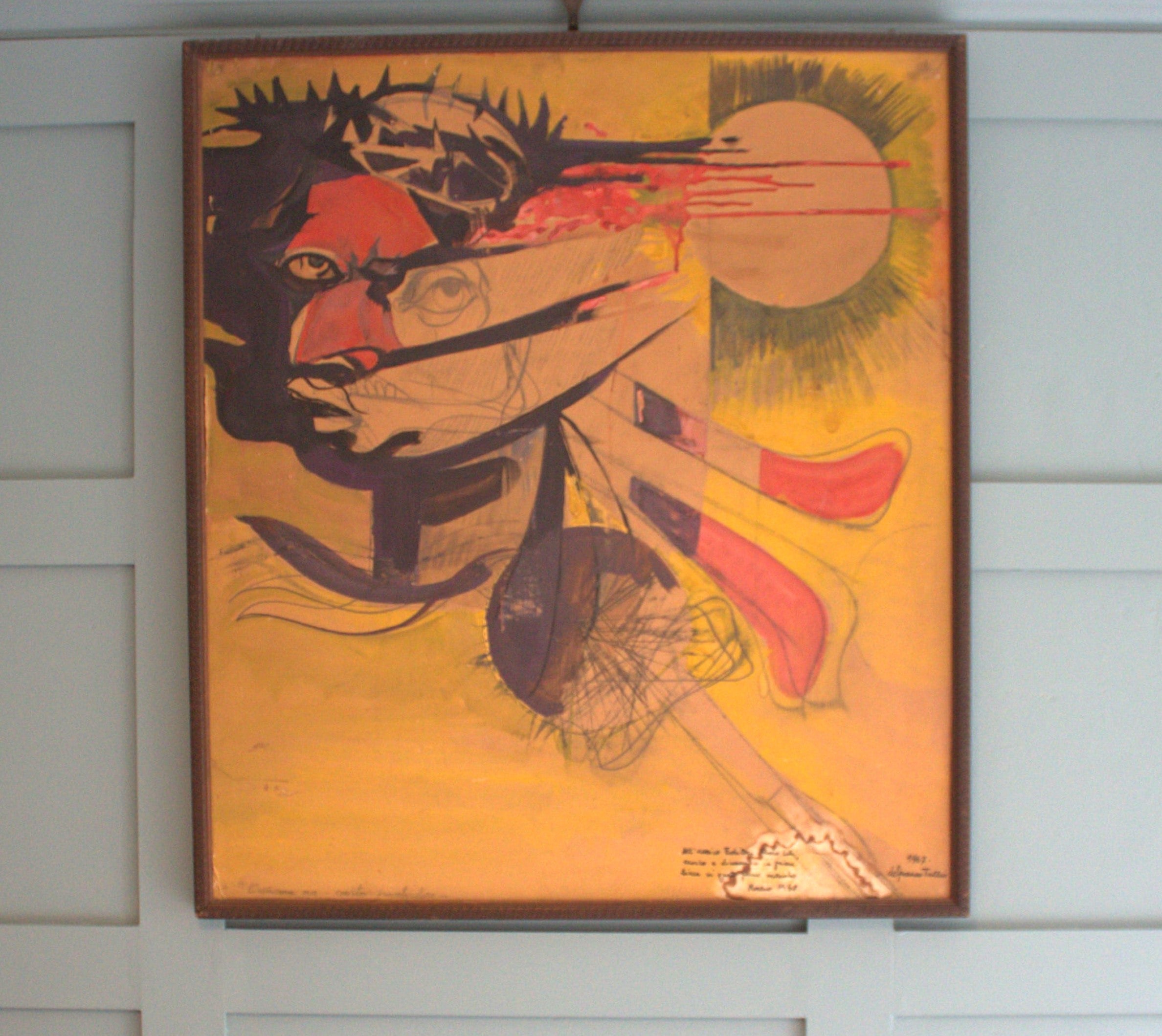
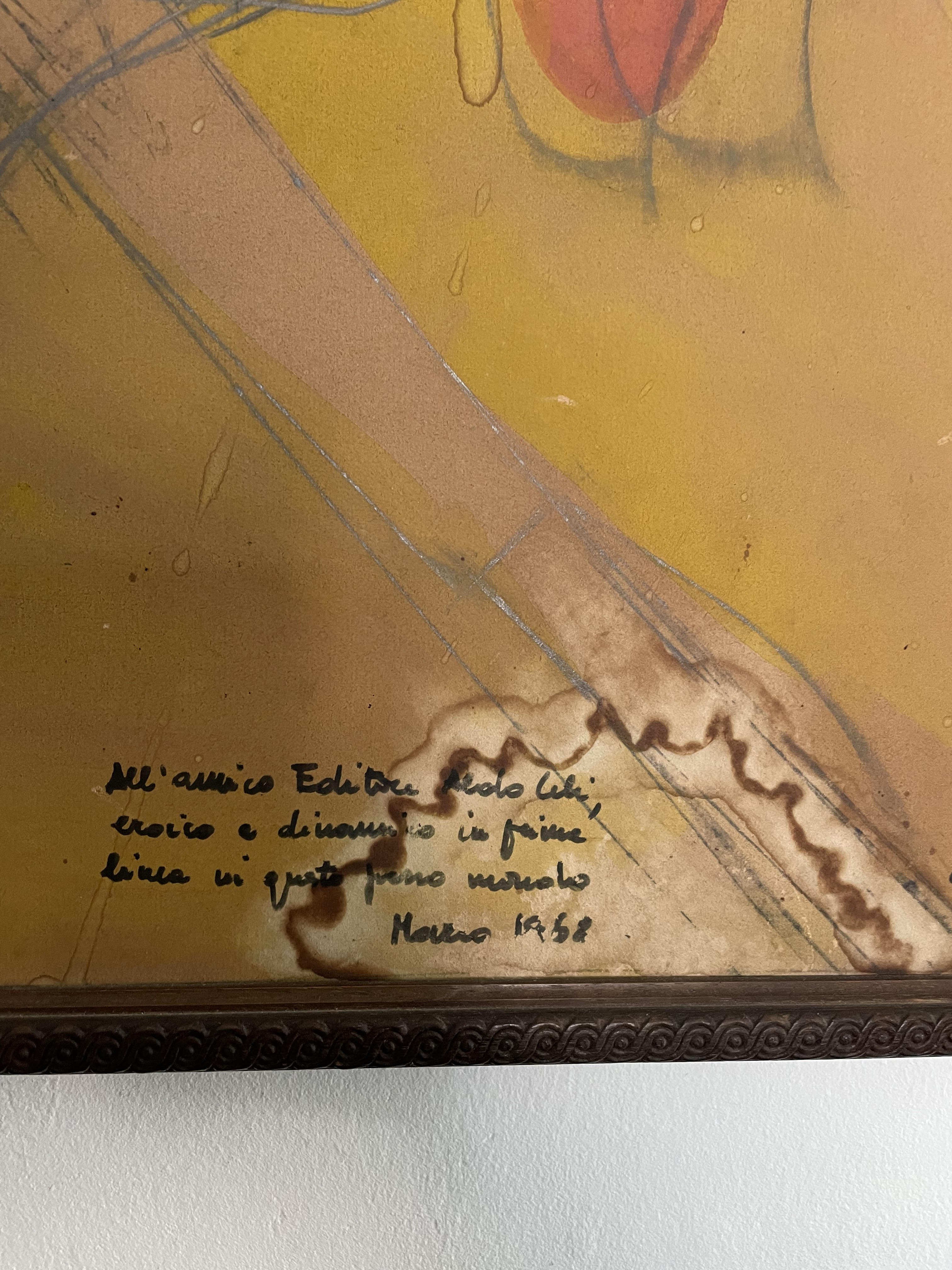
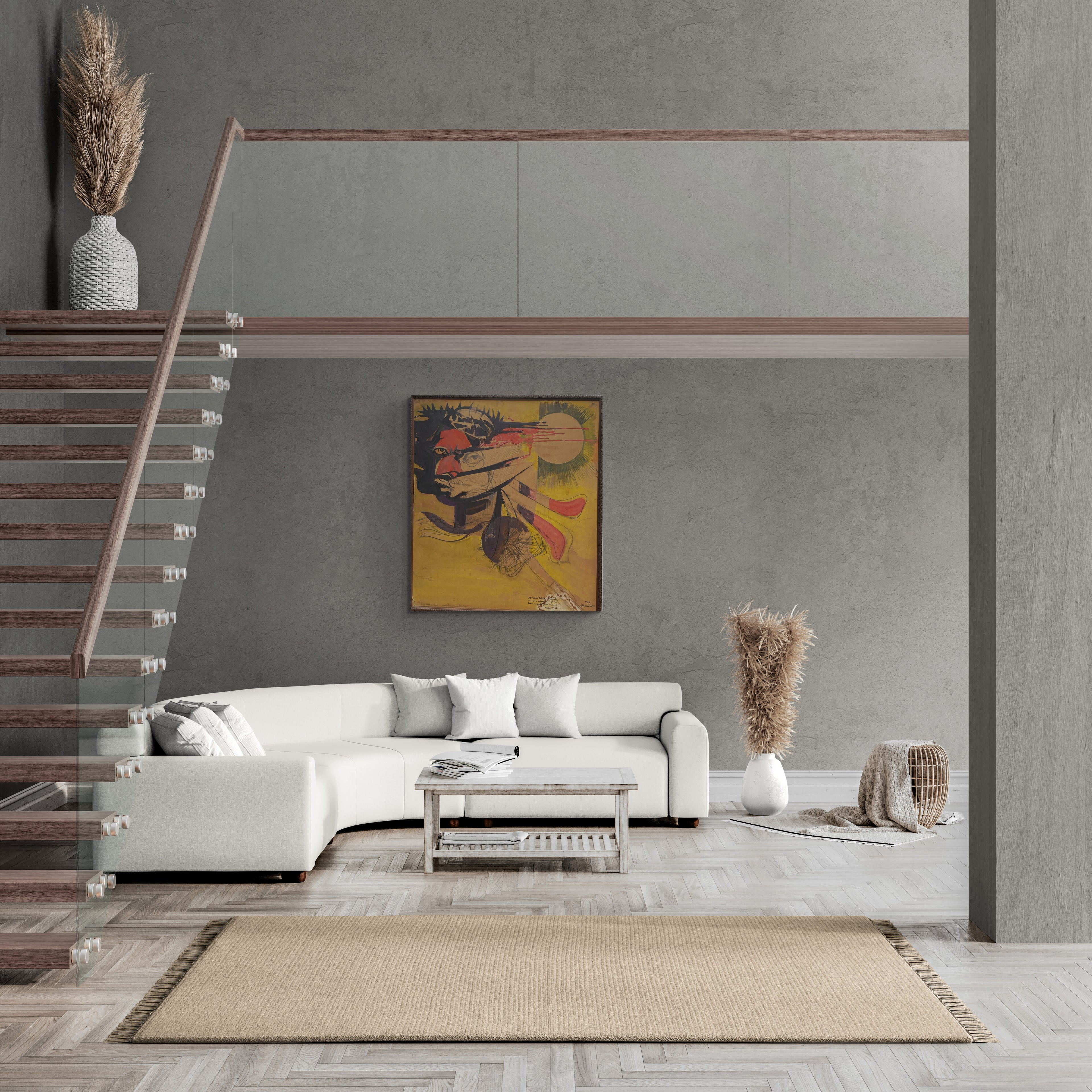
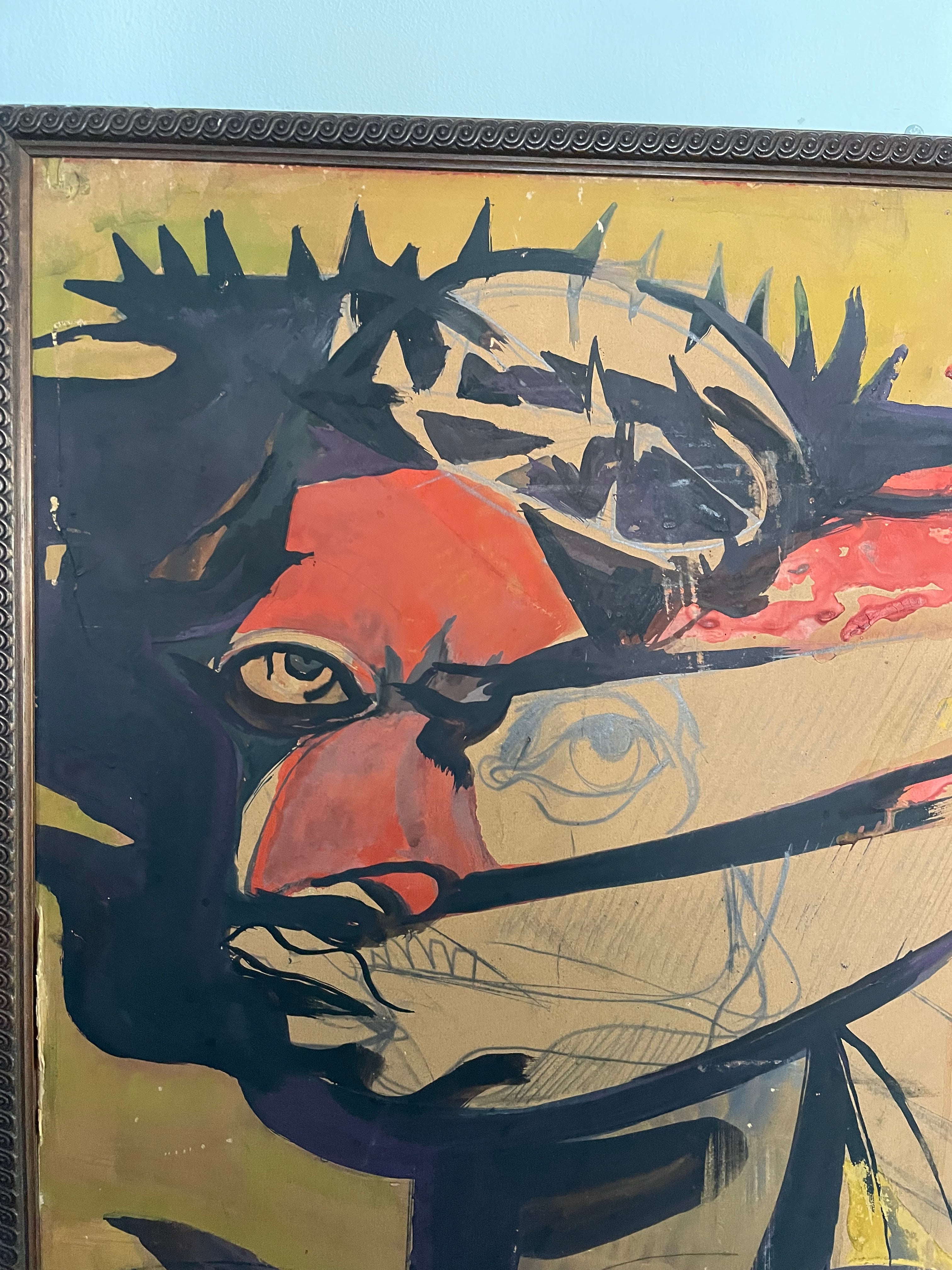
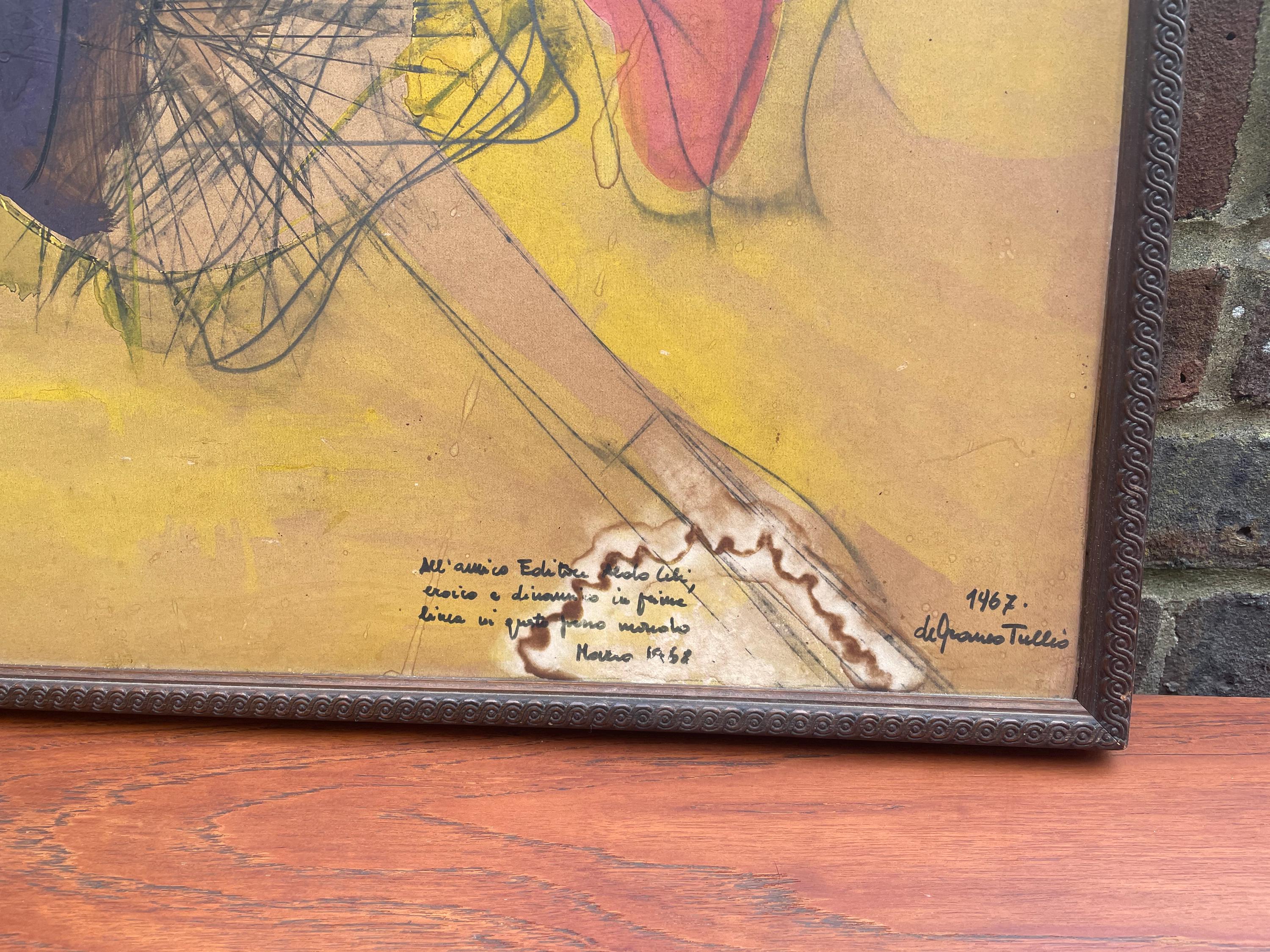
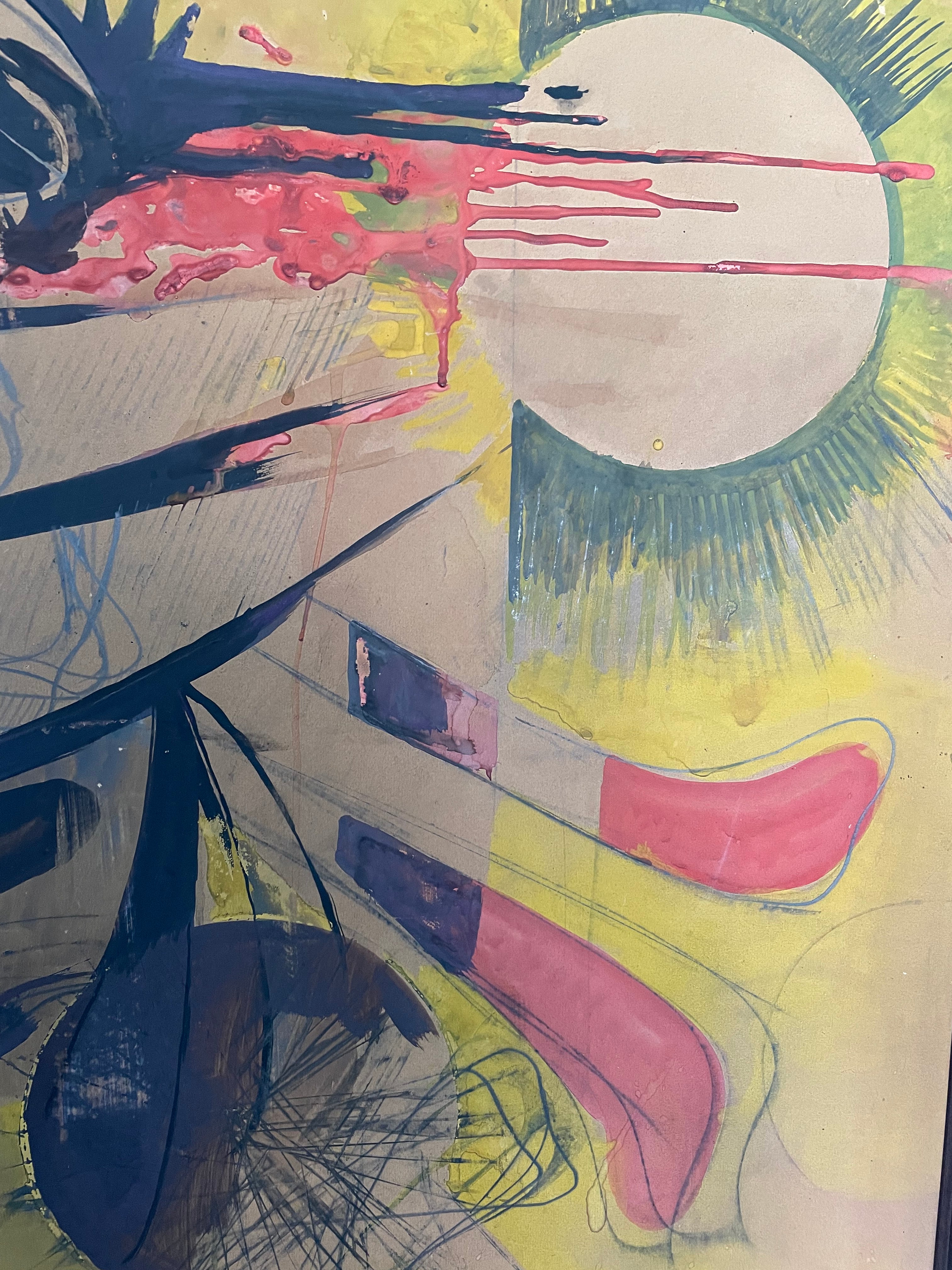
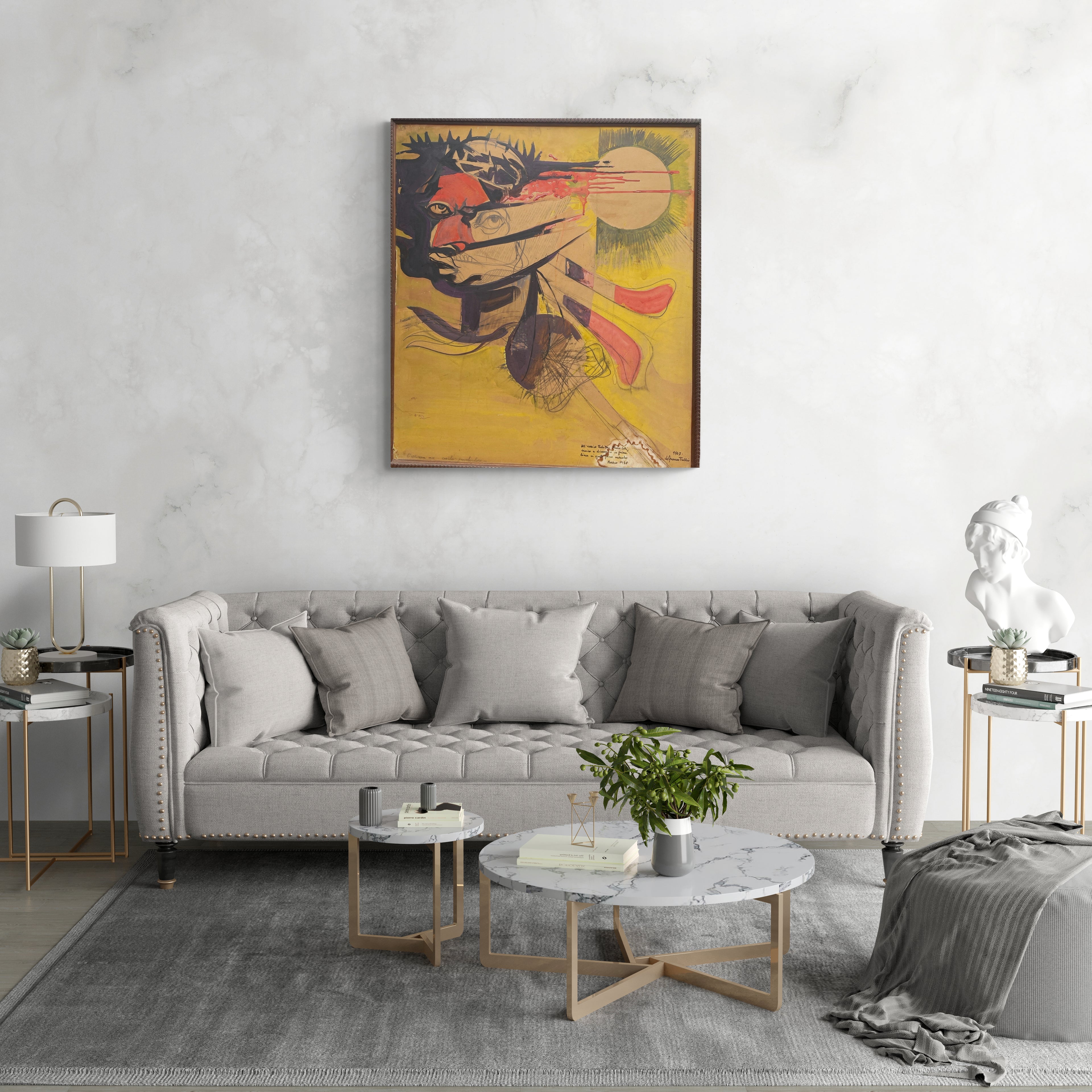
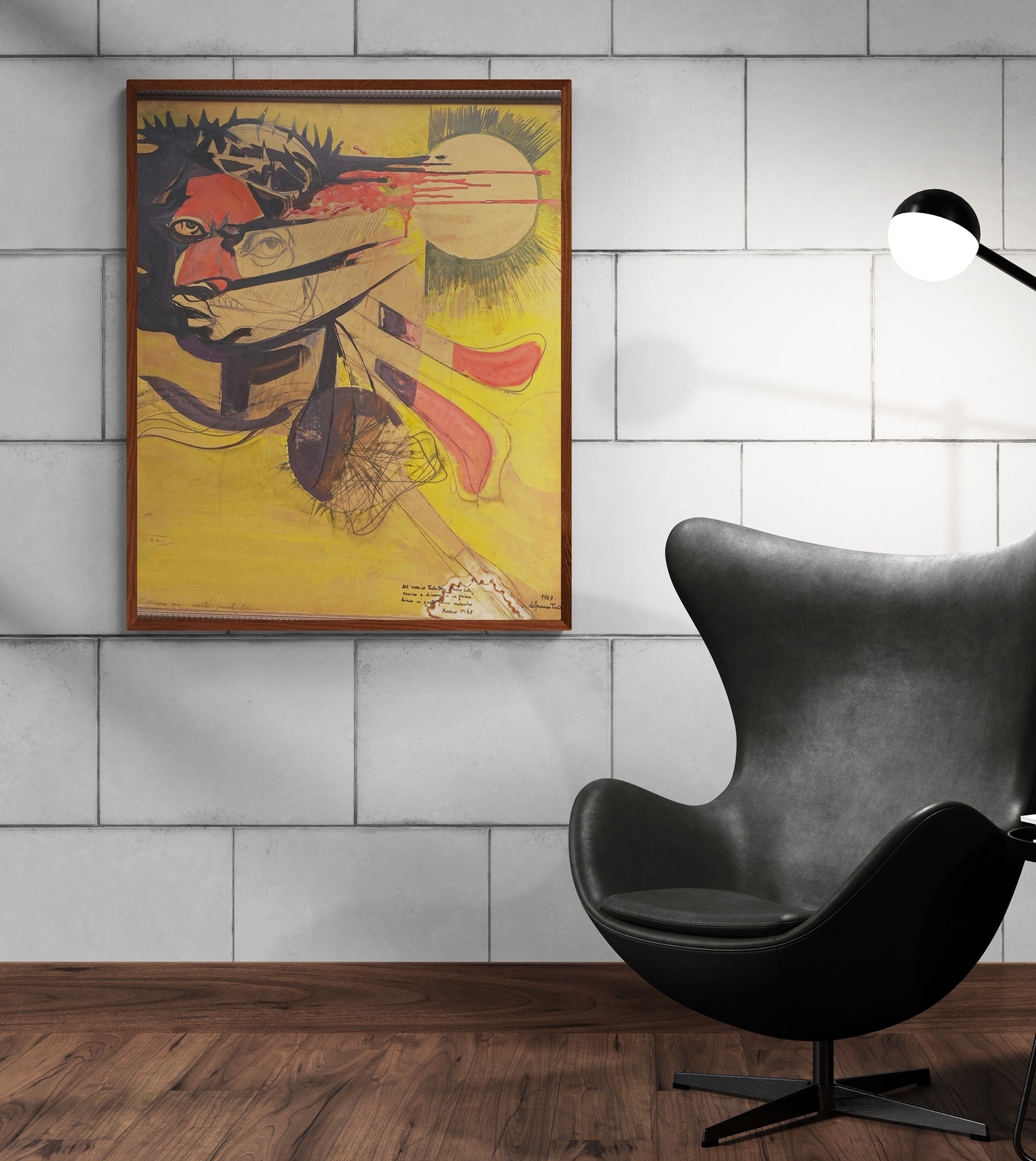
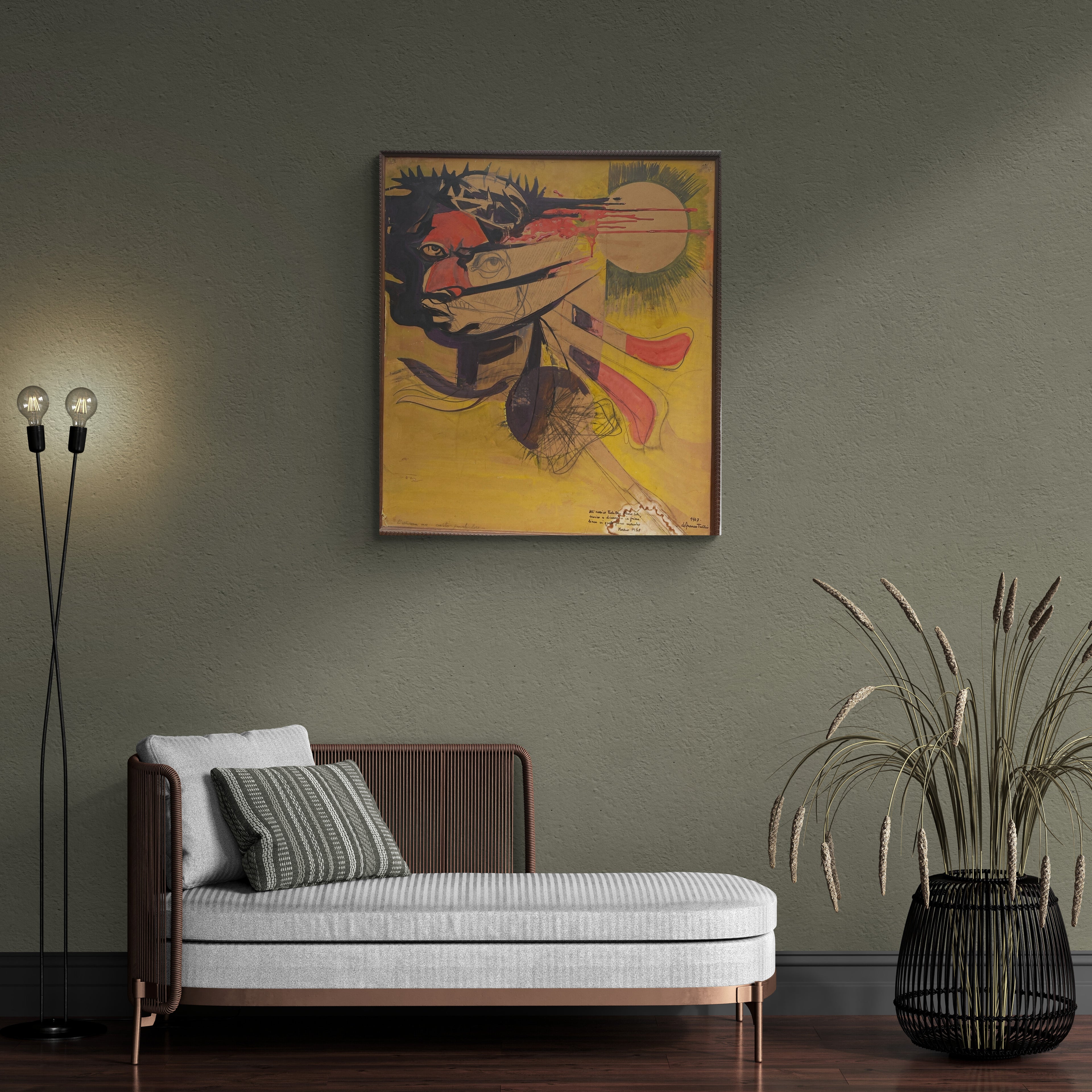
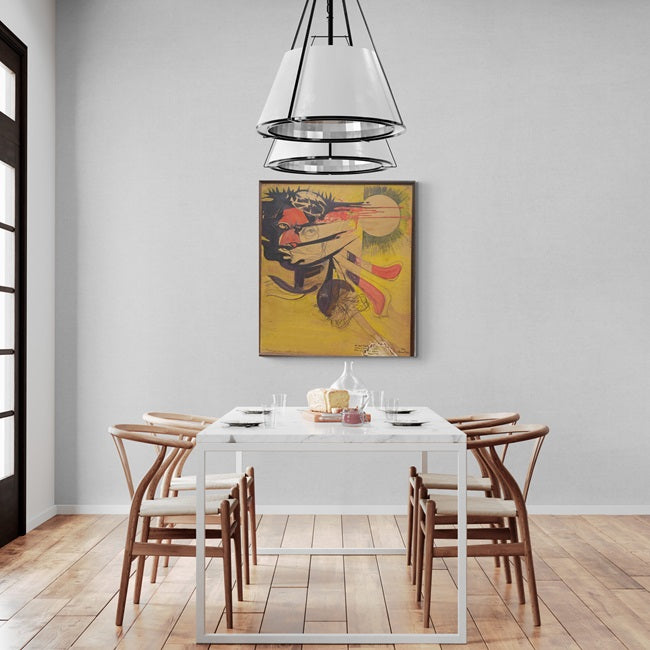
Medium
Pencil and paint on paper
Condition;
Signed and dated bottom right. Dedication in Italian to an editor
Some paper creases to the edge, water stain bottom right, and some light staining.
Please contact us for high-resolution images- or we can arrange mutually convenient virtual viewing.
Dimensions:
Height: 82 cm
Width: 72 cm
🔎 Provenance Story
We came across this evocative piece on an unexpectedly grey afternoon in Sussex — the kind where the past feels thick in the air and time has a way of slipping sideways. I was visiting a retired editor, a known figure in post-war literary circles, who had quietly built a remarkable private collection over the decades. His flat, tucked discreetly behind the Brighton Museum, was a world unto itself: floor-to-ceiling shelves of dog-eared manuscripts, Brutalist ceramics scattered between first editions, and a quiet reverence for mid-century art and design that was impossible to miss.
The painting hung above a walnut writing desk, its saturated tones of burnt orange and inky black cutting through the dim winter light like punctuation in an unfinished sentence. It was immediately magnetic — not just for its palette, but for its palpable energy. There was something bold and introspective at once in the way the colours danced and collided — the push and pull of post-war optimism tempered by existential depth. It was unmistakably Italian, unmistakably 1960s.
When I asked about it, the editor smiled — wistful, proud. “Un regalo,” he said. A gift.
It had been presented to him by the artist himself in the late 1960s, a gesture of gratitude for championing a young voice before the art world had fully caught on. A dedication in soft graphite lingers in the lower corner, still visible beneath the strokes — a quiet personal note immortalised in paint and paper. These were different times — a moment when editors and artists often moved in lockstep, co-conspirators in the cultural reawakening of a new Europe.
The artist, though never widely known outside Italy, was part of the informal Milanese school — influenced by Arte Informale, but with a distinct lyrical abstraction all his own. You see it in the composition’s fluid geometry, the tension in the brushstrokes, and the use of colour as both emotion and architecture. It’s an artwork that doesn’t just decorate a space — it inhabits it. There’s creative dialogue in its DNA.
We acquired it directly from that editor, with his blessing and a handshake. He told us he was finally ready to part with it — not because its meaning had dimmed, but because he believed “the right person” would feel the same resonance he did when he received it all those years ago.
Returns and Shipping
21 Days return - Buyer pays for returns.
UK delivery £35-£55 - 7-10 days for delivery. N.Ireland highlands of Scotland and islands please contact for an accurate quote
Worldwide delivery is available; please contact us for a quote
